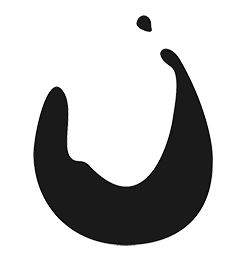Bordeaux, Napa Valley, Tuscany, La Rioja, your living room. What do all of these places have in common? As you may have already guessed, they are all excellent and ideal locations for experiencing some of the most spectacular varieties of wine which the world has to offer.
Wine tasting is often thought of as something which requires guidance from expert sommeliers, accompanied by the sights and smells from the land in which the grapes were grown. And of course, a wine tasting adventure does lend a certain special something to whatever you choose to sip. But you can learn how to appreciate and identify good wine just as easily from the comfort of your own home. This article will help get you started.
What is wine tasting?
Wine tasting means drinking wine — carefully and thoughtfully, with special attention paid to the individual notes that come together in both the flavor and aroma to construct the overall profile and palate of each individual bottle. We’re all familiar with the often elusive descriptions of different varietals which describe notes as familiar as cherry, chocolate, and cinnamon, or as out-there as mowed grass, diesel, and even gunpowder.
The aim of wine tasting is both to educate oneself on the flavorful possibilities provided by viticulture, as well as to better appreciate the unique properties of each wine which make imbibing this nectar of the gods into a true experience. Plus, it’s fun!
How to taste wine at home
Here is a brief guide that will help you taste wine the right way, even without instruction from a master.
- Arrange as many clean glasses as there are bottles of wine against a white tablecloth. Pour your wine, and make sure you remember which glass came from what bottle.
- Begin by observing your wine against the white of the tablecloth — or any available white background. Note depth of color, clarity, and viscosity.
- Next, swirl your glass and take in the wine’s aroma. Take notes, and be as specific as you can when identifying elements of the overall smell.
- Now it’s time to taste. Take a sip, and swish the wine like mouthwash. This will help to coat your palate and give you the best chance of identifying everything this wine has to offer. Again, take notes and be as specific as you can. Try to understand how the flavor matches or differentiates from the aroma.
- If you like, you can read about the flavor notes on the wine label and see if you can pick those out yourself. If tasting with friends, discuss what you noticed.
- Have fun! Above all, wine tasting should be an enjoyable experience.
Wine tasting at home ideas
Centering your tasting around a theme can help you better understand how to distinguish between things like year, grape, and region. Here are a few ideas to get you started.
- Local wines. Include a variety of wines which are grown in proximity to where you live, or wherever your tasting event is being held. Take note of microclimate, terroir, and other regional factors before you begin your tasting. See if you can taste any notes which are wholly unique to your area.
- Horizontal wines. Expand your knowledge of why place matters even further by tasting a single varietal and year, but selected from different farms and producers. For example, have only 2015 Pinot Noir at your table, but source each bottle from a different region or farm.
- Vertical wines. To understand how the events of each year affect the ultimate taste of a wine, taste a single varietal from one region or producer, but include a number of different years. Look at how the producer describes the flavor, and see if you can taste the subtle changes between a Napa Chenin Blanc from 2004, 2005, 2006, etc.
- Basics. If you need to work on your viticultural ABCs, try tasting a selection of the most common and readily available wines. For reds, include a Pinot, a Merlot, a Cabernet, and a Syrah. For whites, a Chardonnay, a Pinot Grigio, a Sauvignon Blanc, and a Riesling. Include a number of each if you want to get really good at telling each grape apart.
- Celebrity labels. For a fun and carefree experience, gather a few bottles produced by celebrity winemakers. This can be a great way to observe the Oscars, the Met Gala, a streaming premier, or other star-packed event. A few A-List celebs with their own labels include Angelina Jolie, Jay-Z, and Francis Ford Coppola.
- Organic, natural and biodynamic. To get a feel for how the growing process itself affects the aroma and flavor of your favorite wines, try selecting your tasting varietals from farmers using unconventional practices in their vineyards. For a selection of amazing wines from Argaux, visit our other article: Organic Wine, Natural Wine, and Sulfites.
- Blind. The best way to learn about wine is to taste it, without any preconceived notions of how it should taste. Whatever wines you include in your tasting, obscuring the labels with wrapping, bagging, or removal will help you experience the wine with both a clean palate and clear expectations. Get started with your next blind tasting adventure with one of Argaux’s Blind Tasting Kits, and begin your sommelier journey.





